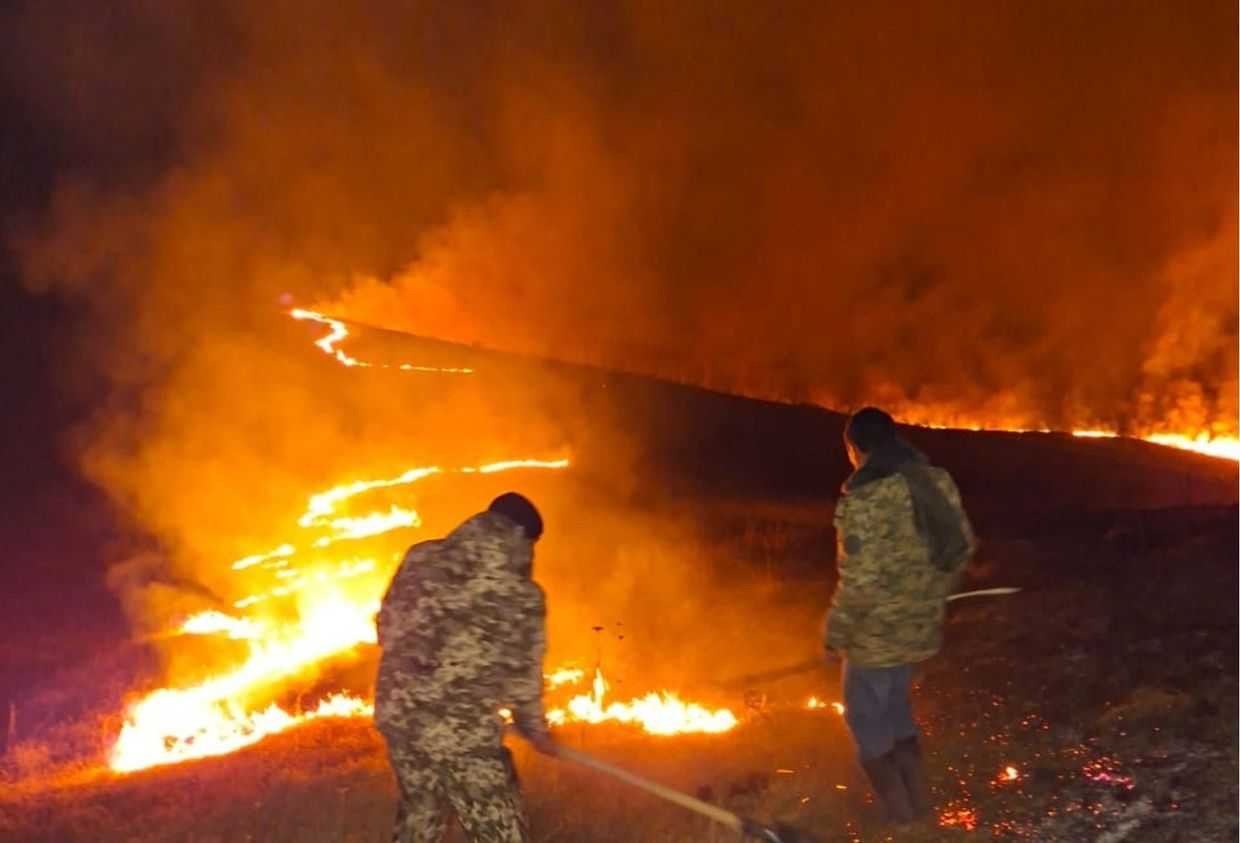
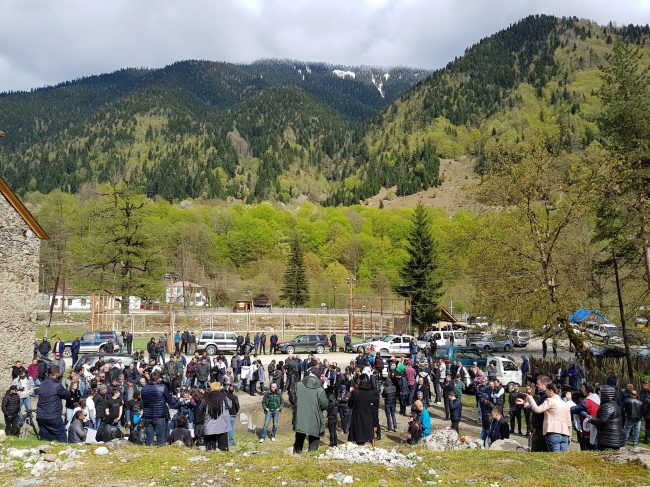
 Dozens gathered in the village of Chuberi in Georgia’s historic Svaneti region on Saturday to once again protest against the construction of the Nenskra dam. Protesters say the 130-metre high dam poses a threat to the people, culture, and environment of Svaneti, and vowed to prevent construction from going ahead.
Dozens gathered in the village of Chuberi in Georgia’s historic Svaneti region on Saturday to once again protest against the construction of the Nenskra dam. Protesters say the 130-metre high dam poses a threat to the people, culture, and environment of Svaneti, and vowed to prevent construction from going ahead.
The Nenskra project includes a 130-metre high dam on the River Nenskra, a 3 square kilometre reservoir, and a 280-megawatt hydropower plant (HPP) in Mestia Municipality. The project launched in 2015 and has since faced numerous protests by local people and rights groups.Nato Subari, a school teacher at Chuberi, told Liberali the dam is a psychological burden for those living downstream from the reservoir.
See options for English subtitles
‘We asked how soon the water would reach us if there was an accident; they said in 15 minutes. We can’t even evacuate a school in 15 minutes, let alone a 300 family village’, Subari said.
‘They’re telling us the dam will attract tourists. Do you think tourists will be attracted by a dam or by this unique landscape? They have not done any calculations, we haven’t been given answers about whether the benefits will outweigh what’s being destroyed in the valley’, Subeliani said.
Local resident Gioni Tsindeliani said either the government will stop the construction, or they will make them stop.
‘If they don’t stop, we will have no other choice but to take action ourselves. They will give it up or we will make them. Our ancestors have been protecting this land for a long time. Wouldn’t it be a shame if we gave it up this easy?’, Tsindeliani said.
[Read more about who’s funding the project on OC Media: EBRD to finance Nenskra dam in Svaneti]
Another Svan attending the demonstration said the dam will be harmful to the region. Zura Nizharadze said ‘if locals participate in the construction, it will be the same as digging their own graves’.
‘Still, a lot of people justify the construction. They say they are forced to do it because they have families to sustain. It makes it blackmail, doesn’t it?’, Nizharadze said.
He said the government should prioritise rural development and tourism over dams, and the environment is a good resource for this.
‘We have good resources to develop rafting, skiing, etc. But they don’t even try. It’s only dams they want. They portray it as if it’s the only way for us to develop while in reality, it’s a way of destroying Svaneti’, he said.
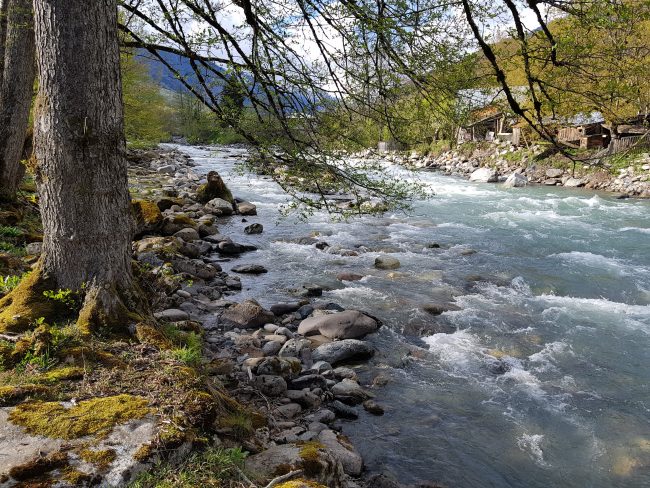
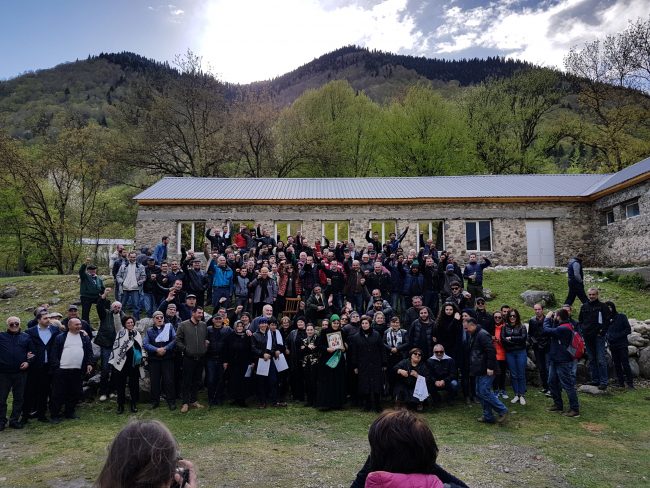
Dato Chipashvili from the Green Alternative, an environmental group, said they don’t oppose building dams in general, just the way they are being constructed.
‘We don’t know whether there will be more benefits than loses because not only in this particular case, but in general, calculations on the costs vs the benefits have not been done. We haven’t been able to construct a single dam that didn’t collapse or was washed down by a landslide. We are in a situation where we destroy the environment, impact the people living in the area, and we don’t even have hydroelectric stations in the end’, Chipashvili said.
He said the blame lies with the Ministry of Environment, which does not study the environmental impacts as it should.
About Nenskra
Nenskra Hydro JSC, jointly owned by South Korean state utility K-water (80%) and the Georgian state-owned Partnership Fund (20%), is constructing the plant.
They plan to raise 70% of the $1.1 billion cost of the project from international financial institutions. The EBRD is to cover $214 million, 20%, while both the European Investment Bank (EIB) and the Asian Development Bank are considering financing the project.
In 2017, local environmental group Green Alternative filed a complaint with the EIB claiming that the assessment of natural geological hazards connected to the Nenskra project was ‘inadequate’; the EIB is still considering the complaint.
Green Alternative has claimed that the environmental and social impact assessment of Nenskra failed to recognise Svans as indigenous peoples, and argued that this judgement is ‘arbitrary and contrary to the United Nations’ definition of indigenous peoples’.
In addition, the ESIA concludes that only 80 families in two gorges would be ‘directly impacted’ by the project and that therefore the social impacts are not significant, the Green Alternative reported.
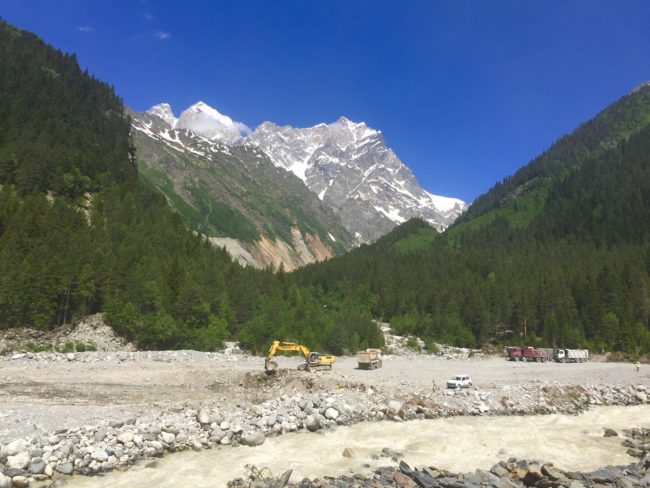
They estimate the project’s impacts will be ‘much broader and encompass segments of the population for which the social consequences have not been accounted for, such as women, the elderly, and internally displaced people’.
According to the Green Alternative, the project will flood up to 267 ha of forests and communal lands in adjacent areas.
Additionally, an 8.7-metre high dam and 12.4-kilometre diversion tunnel will be built to bring water from the Nakra to the Nenskra reservoir, which, Green Alternative claims will ‘considerably reduce the environmental flow of the Nakra river, leaving just 10 percent of average annual flow downstream regardless of seasonal fluctuations’.
[See in Georgian on Liberali: #ხმები ► პროტესტის ხმა სვანეთიდან]





